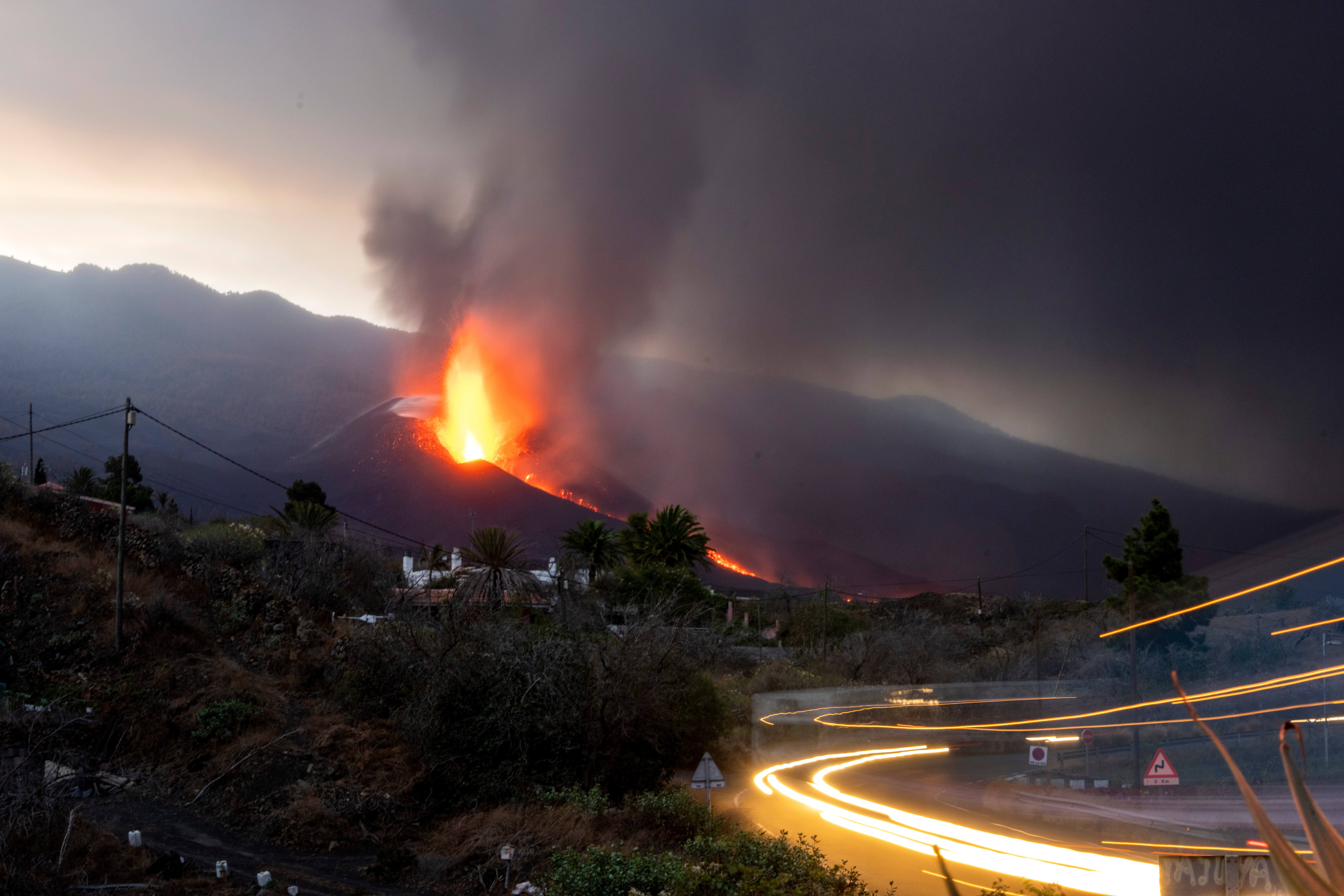La Palma island braces for more quakes as volcano roars on
Residents on Spain’s La Palma island are bracing for the possibility of bigger earthquakes more than five weeks after a volcano erupted

Your support helps us to tell the story
From reproductive rights to climate change to Big Tech, The Independent is on the ground when the story is developing. Whether it's investigating the financials of Elon Musk's pro-Trump PAC or producing our latest documentary, 'The A Word', which shines a light on the American women fighting for reproductive rights, we know how important it is to parse out the facts from the messaging.
At such a critical moment in US history, we need reporters on the ground. Your donation allows us to keep sending journalists to speak to both sides of the story.
The Independent is trusted by Americans across the entire political spectrum. And unlike many other quality news outlets, we choose not to lock Americans out of our reporting and analysis with paywalls. We believe quality journalism should be available to everyone, paid for by those who can afford it.
Your support makes all the difference.Residents on Spain’s La Palma island braced Wednesday for the possibility of bigger earthquakes that could compound the damage from a volcano spilling lava more than five weeks since it erupted.
Seismologists said a 4.6 magnitude earthquake shook the island a day after they recorded a 4.9 magnitude quake that was the strongest so far of the hundreds that have occurred under La Palma since the volcano's Sept. 19 eruption.
So far, the earthquakes have either been small enough or far enough under La Palma to do no harm, other than adding to the anxiety of the island residents. The Tuesday earthquake was felt up to 60 miles (96 kilometers) away on three other segments of the Canary Islands, an archipelago off northwest Africa
“The scientific committee has been warning for more than a week that we could see earthquakes, given their recent depth of around 12 kilometers (7.4 miles) and their magnitude, that reach a magnitude of 6 (on the Richter scale),” María José Blanco, director of Spain’s National Geographic Institute on the Canary Islands, told Spanish national broadcaster RTVE.
Flows of molten rock from the Cumbre Vieja volcano itself have caused the evacuations of about 7,500 people and destroyed more than 2,000 buildings, mostly homes. The rivers of lava cover over 900 hectares (2,200 acres) of mostly farmland, while one major flow is extending the island into the Atlantic as it cools.
No deaths have resulted from the eruption. Other than in an area on the island’s western side, life continues as normal for La Palma's 85,000 residents except for having to clean up volcanic ash.
The last eruption on the island, in 1971, lasted 24 days. Its longest, in 1949, lasted 47 days. The current activity is on day 39 and shows no signs of stopping.
“We saw the worst-case scenario in the 1949 eruption, when a second volcano mouth opened up and cut off the southern part of the island, which had to be supplied by boat,” volcano scientist Vicente Soler said. “That is highly improbable, although not impossible, today.”
____
Wilson reported from Barcelona.